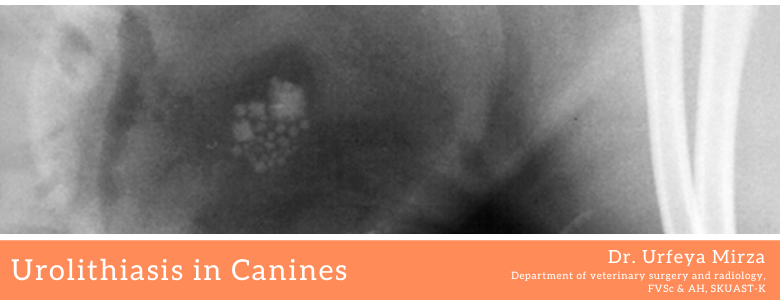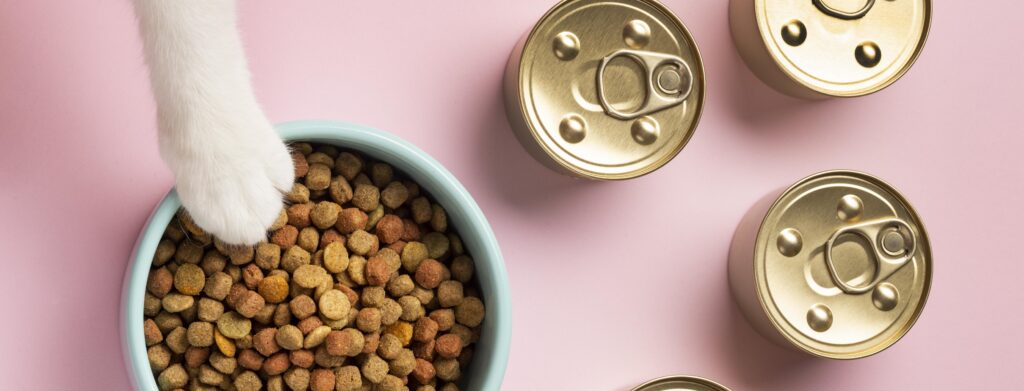Introduction
Kidney performed unique functions among the internal organ, mainly in keeping the body free from the accumulation of toxic wastes products and excess water. Kidney weights 2% of total body weight and received about 20% of cardiac output of blood. Glomeruli of the kidney filter 1/5th of plasma in every minute and the rest flow out into the circulation. The kidney besides keeping the body healthy, it is also responsible for maintaining body homeostasis in regulating blood pressure, electrolyte-water, and acid-base balances. The clinical assessment of the kidney generally focuses upon identifying the presence of any diseases and evaluation of other systemic or chronic diseases affecting the kidney functions. There are various tests that can detect the presence of structural changes affecting the kidneys which include urinalysis, imaging studies, renal function, and renal biopsy. The impact of a disease process on renal function, however, is generally assessed by tests that evaluate glomerular filtration rate for measurement of serum creatinine, blood urea nitrogen (uric acid, urea, cysteine C), renal blood flow, glomerular permeability (proteinuria), renal solute handling and urinary concentrating ability.

It is found that dysfunction of the kidney is detected at a much later stage when more than 75% are damaged and often irreversible. In pet animals, the progress of kidney dysfunction is a slow process without major clinical symptoms and it becomes a challenging task for veterinarians to detect during an early stage. This may results in progressive kidney failure due to increase workload per nephron and may lose its function. Kidney failure is always accompanied by excessive accumulation of toxic waste in the body, abnormal body homeostasis, loss of buffering capacity of blood, anemia, hypocalcemia, electrolytes-water imbalance, and finally lead to coma and death. There is a significant reduction in renal mass (50%-60%) and reduced GFR before the onset of any significant symptoms or any minor signs and symptoms are indicated. However, kidneys have considerable ability to revive their functional capacity in case of renal injury and early stage of kidney failure.
Kidney Failure:
Kidney failure is defined as a loss of kidney functions with resultant accumulation of nitrogenous wastes and dysregulation of fluid-electrolytes and blood volume. Early-stage detection of renal dysfunctions will prevent further development to progressive and chronic or end-stage renal failure. Kidney dysfunction may be due to kidney disease or failure caused by renal disease, renal injury, or other chronic systemic diseases. Kidney failure may be acute or chronic which may affect both kidneys.
- Acute kidney injury (AKI) or failure (AKF): This isa sudden loss of kidney functions due to a blunt trauma, severe haemorrhage, loss of body fluid in severe diarrhoea causing fluid-electrolytes imbalance and blood volume. AKI is reversible if diagnose in time with prompt treatment. AKF is abrupt loss of kidney functions with resultant accumulation of nitrogenous waste in the body. AKI are often divided into three groups –
- Pre-renal or pre-azotaemia (PRA) failure: This condition show reversible increase in serum creatinine and urea levels due to decresased renal perfusion and reduction in the GFR. Ischemia leads to pre-renal azotaemia of sudden onset and animal may undergo shock and death.
- Intra-renal failure: This condition affect structures of the nephron glomeruli, tubules, vessels or interstitial. The most common cause of intra-renal (intrinsic) disease is acute tubular necrosis (ATN)
- Post-renal failure: Early recognition of the cause of AKF, especially distinguishing PRA and ATN are widely considered clinically important as fluid resuscitation may improve PRA but can cause tissue edema and worsen ATN. Nephrotoxic drugs like antibiotics, heavy metals, herbicides/pesticides, carbon tetrachloride, snake venom, leptospira infections in dog etc. Accounts for progressive renal damage and may be reversible if attended timely.
Chronic Kidney failure (CKF): is defined as the gradual loss of renal structure or functions which may have happened slowly and over a long period of time with a minimum of three months duration. CRF occurs due to renal disease or other systemic diseases viz. diabetes mellitus, obesity, renal calculi, high blood pressure, and excessive intake of pain killers. It may often associate with environmental agents and conditions viz. Heavy metals, industrial chemicals, elevated ambient temperatures, and infectious agents. CRF is manifested by abnormal albumin excretion and accompanied by nephritis i.e. glomerulonephritis, pyelo-nephritis, interstitial nephritis. CKF causes progressive damage and irreversible loss of functioning nephrons. Some of the common symptoms are oliguria, edematous face, and feet, lethargy, loss of appetite, nausea, vomiting, drowsiness, muscle cramps, itchy dry skin, anemia. Early recognition of CKF could slower progression and prevents complication from developing into cardiovascular-related complications. CKF can be classified into 5 different stages with stage 1 being the least severe and stage 5 being the worst called ESRD (End-Stage Renal Disease) or complete and permanent kidney failure. The treatment requires either dialysis or a kidney transplant to continue its life. Dialysis is done either by hemodialysis and peritoneal dialysis and kidney transplant are usually placed in the iliac fossa, the lowermost part of the abdomen from blood-related or kidney donors.
Different Kidney Function Tests
1. Measurement of Glomerular Filtration Rate (GFR): Total quantity of filtrate form by all nephrons present in each kidney in a given unit of time is called GFR. The central measure of renal function is a measurement of GFR, as the formation of glomerular filtrate is the primary event that drives urine formation and nitrogenous waste excretion. Although measurement methods will alter the exact values, normal ranges for GFR are generally 3.5-4.5 ml/min/kg body weight in dogs and 2.5-3.5 ml/min/kg body weight in cats. GFR normal rate in 20 kg body weight dog is approximately 115 liters/day, nearly 20 times the dog’s extracellular fluid volume. It is reduced before the onset of symptoms of renal failure and is related to the severity of the structural abnormalities of the kidney in the case of chronic renal disease. Measuring GFR will help to select the right treatments options and know the type of kidney failure.
| Category | GFR measurement | Description | Precautionary Action |
| G1 | ≥90 | Kidney damage with normal or high GFR | Investigate for proteinuria, haematuria |
| G2 | 60-89 | Kidney damage with slightly low GFR | Renoprotection for blood pressure control, dietary modifications |
| G3 | 30-59 | Moderately low GFR | Renoprotection for blood pressure control, dietary modifications |
| G4 | 15-29 | Severely low GFR | Prepare for renal replacement therapy |
| G5 | <15 | Kidney Failure | Prepare for renal replacement therapy |
2. Measurement of Urinary Clearance: The ideal measure of renal function is the determination of GFR via a urinary clearance procedure in which a timed, total collection of urine is used for the standard clearance formula:
C = (Uv X Uc)/Pc
Where, C = clearance (ml/minute), Uv = urine flow rate (ml/minute), Uc = concentration of the solutes in urine, Pc = concentration of solutes in plasma.
As intra-species GFR is positively related to body mass and surface area, the clearance is usually expressed per kg body weight as noted above. Common substances used as renal clearance and a gold standard for measurement of GFR in dogs, cats, man, etc is Inulin, a fructose polymer that is freely filtered, not metabolized, and is neither reabsorbed nor secreted. However, all urinary clearance measurements require an indwelling urethral catheter and considerable technical time and expertise.
3. Serum Urea: Urea is synthesized in the liver from carbon dioxide and ammonia liberated from the breakdown of amino acids. It constitutes almost half of the total of the non-protein nitrogenous substances of the blood. Urea is passively filtered through the renal glomeruli, both tubular reabsorption and secretion (recirculation of urea) occur leaving less than 50 % excreted in the urine. Blood urea nitrogen (BUN) is directly related to the excretory function of the kidney and measuring the amount of urea nitrogen in the serum is an indirect measurement of renal function. The amount of urea in the blood is affected by the protein in the diet and the normal range of BUN is 8-29mg/dl in dogs.
4. Serum Creatinine: Muscle cells take up creatine produced by the liver, which then undergoes irreversible decomposition to creatinine. Creatinine is excreted by the kidneys through filtration in dogs and cats and also by a small amount of proximal tubular secretion in dogs. Creatinine production will be affected by lean muscle mass, and thus there are trends among gender, age, and breed that alter plasma concentration of creatinine. It is filtered by the kidneys and excreted in the urine. Unlike urea, creatinine level is not affected by protein intake. Many studies support the similarity of creatinine clearance to GFR and its reciprocal relationship with the serum creatinine level.
Renal functions have routinely been assessed with an estimated creatinine clearance, serum creatinine or an estimated glomerular filtration rate (eGFR) derived from the serum creatinine. Creatinine is an imperfect filtration marker, because it is secreted by the tubular cells into the tubular lumen, especially if renal function is impaired. When the GFR is low, the serum creatinine and creatinine clearance help to estimate the true GFR. Some drugs like cimetidine or trimethoprim reduce tubular secretion of creatinine. Therefore, when these drugs are used, a more accurate measurement of GFR is obtained as it is largely free from the error contributed by the physiological tubular secretion of creatinine.
5. Serum Electrolytes: Kidney disease is associated with a variety of disorders of minerals and electrolytes balance. A test for electrolytes includes the measurement of sodium, potassium, chloride, and bicarbonate. These ions are measured to assess the functions of kidney, endocrine (glandular) and acid-base balance. These are most readily assessed with routine plasma biochemical determinations. As an adjunct specifically for evaluating difficult cases of hypokalemia, the fractional excretion (fractional clearance) of potassium can be determined from a single urine sample as:
FE K+ = 100% X (UK X Pcr)/Ucr X PK
Where, FE K+ = fractional excretion (or clearance) of potassium, UK and PK = concentrations of potassium in the urine and plasma respectively, Ucr and Pcr = concentrations of creatinine in the urine and plasma respectively.
This determination can have utility when the excretion rate is high (>20-25%) for potassium in the face of hypokalemia (if evaluated prior to potassium supplementation). Fractional clearances can be calculated for any solute but interpretation is often problematic. Except in specific circumstances, the measurement of urinary electrolyte clearances (fractional excretion rates) or urine solute concentrations adds little to the information provided by serial biochemical determinations and other routine clinical observations.
6. Renal Scintigraphy: Utilizes γ-emitting radio-isotopes labeled compounds which can eliminate through kidneys and its clearance represents GFR.
Ex. 99mTc-diethylenetriaminepentaacetic acid (DTPA)
7. Single Injection Technique: Single I/V dose of sulfanilate or phenolsulfonphthalein injection and percent excretion of injected materials are monitored in the urine, for which requires bladder catheterization and careful urine collection. Another is Iohexol is exclusively filtered by glomeruli and is a radio contrast material.
8. Fractional excretions determination: It is good to measure of tubular homeostatic activity and it needs to be correlated with dietary intake of substance to be analyzed. Random urine samples can be used instead of timed urine collection. In dogs urinary sodium excretion is greatest during first 6 hours of intake and contrary to this urinary potassium & phosphate excretion is lowest soon after eating but increases between 6-18 hours after eating.
Conclusion

Kidney as part of internal organ functions for excreting toxic wastes products and excess fluid accumulation from the body. Normal kidney functions greatly help to keep the body healthy and vital. Therefore, evaluation of kidney functions at regular time interval is necessary especially in pet animals having a high protein diet. This will help to detect any related kidney failures. Kidney dysfunction at an early stage can be reversed when proper necessary measures are taken in time. Chronic kidney failure is categorized depending upon the measurement of different kidney function tests. Kidney failures require prompt treatment of either dialysis or kidney organ transplant to prolonged the lifespan and prevent further kidney damage.



